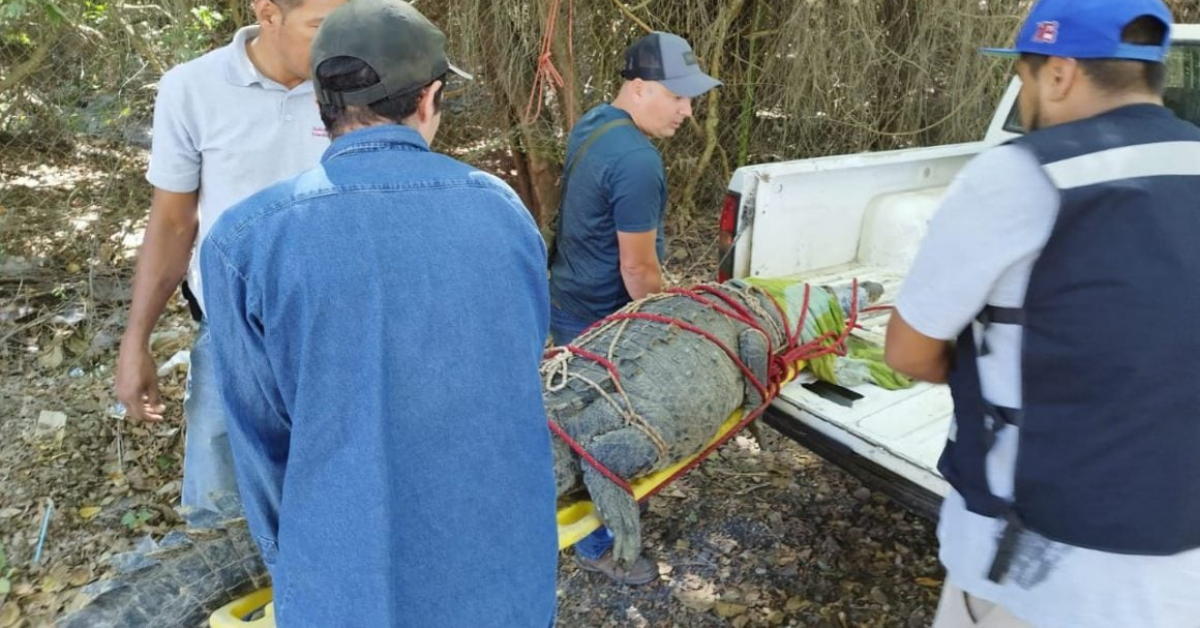Puerto Vallarta, Jalisco, and Bahía de Banderas, Nayarit have been witnessing an increasing number of crocodile sightings, sparking concerns among residents and tourists about the safety of their coastal regions. However, experts provide valuable insights into the actual state of the crocodile population in this area.
Biologist Jaime Torres, working at Estero El Salado in Puerto Vallarta, revealed that, as of January 2024, approximately 250 crocodile specimens have been counted in the region, encompassing both Puerto Vallarta and Bahía de Banderas.
Despite the perception of a growing crocodile presence, Torres noted that the population of these reptiles has been on a downward trend.
The alarm was raised on January 24, 2024, when the State of Jalisco’s Civil Protection agency raised the purple flag as a precautionary measure along the coastal strip from El Holly beach to Playa de Oro. This move was prompted by the potential presence of crocodiles in the area, raising concerns about the safety of beachgoers and tourists.
In recent months, videos circulating on social media have captured crocodiles appearing in urban areas of Puerto Vallarta and Bahía de Banderas, leaving many questioning the abundance of these reptiles in the region and whether they pose a danger. Notable instances include crocodiles swimming near bathers at Holi Beach, strolling on the streets in the Marina Vallarta neighborhood, and even appearing at unexpected places like the Water Treatment Plant in San Vicente.
Jaime Torres explained that the primary reason for crocodiles venturing into urban areas is the rapid growth of housing and real estate developments, which have encroached upon the natural habitats where these creatures once thrived. The crocodiles’ increased visibility during this season is attributed to courtship behavior when they move away from their habitats in search of mates.
As concerns linger about the coexistence of crocodiles and humans in Puerto Vallarta and Bahía de Banderas, Armando Andrade Esquivel, the head of Civil Protection in Nayarit, offered some clarity. He stated that only 10% of these reptiles pose a significant threat to humans due to their size, as they have the potential to kill a human being.
Esquivel also highlighted the fluctuating nature of the crocodile population in the region, citing the constant migration of these reptiles. This migration leads to variations in their numbers, making it challenging to provide accurate population estimates.
Despite the challenges, experts stress the importance of closely monitoring the situation to ensure the safety of the community in the face of crocodile presence along the coastal region of Puerto Vallarta and Bahía de Banderas. It is evident that the delicate balance between urban development and preserving the natural habitat of these reptiles requires ongoing attention and consideration.
Puerto Vallarta, Jalisco, and Bahía de Banderas, Nayarit have been witnessing an increasing number of crocodile sightings, sparking concerns among residents and tourists about the safety of their coastal regions. However, experts provide valuable insights into the actual state of the crocodile population in this area.
Biologist Jaime Torres, working at Estero El Salado in Puerto Vallarta, revealed that, as of January 2024, approximately 250 crocodile specimens have been counted in the region, encompassing both Puerto Vallarta and Bahía de Banderas.

